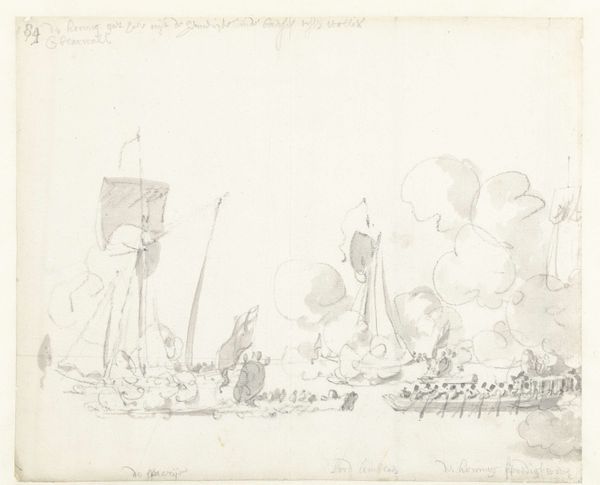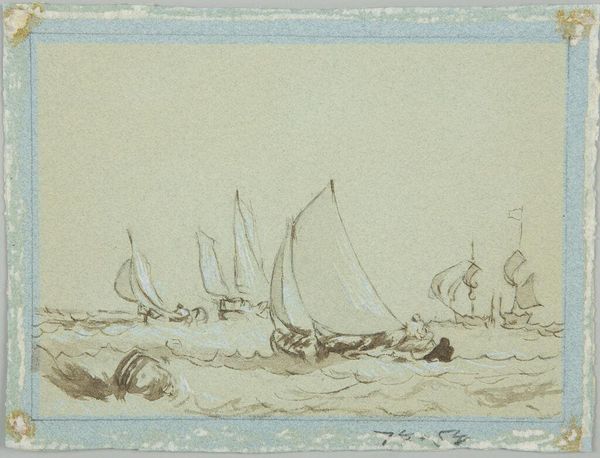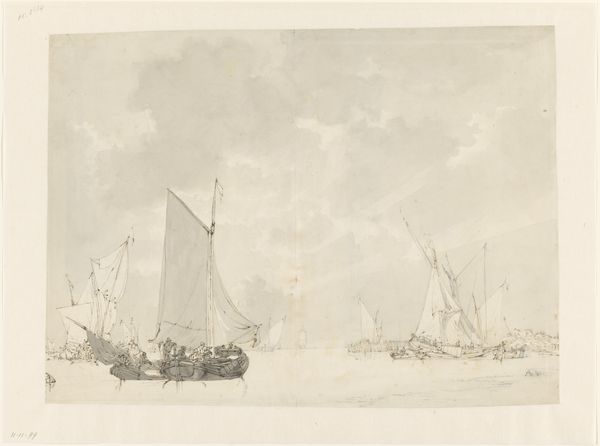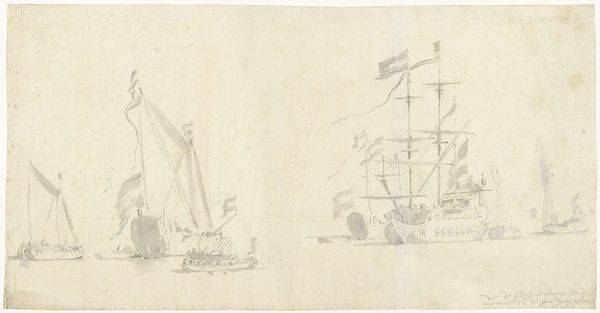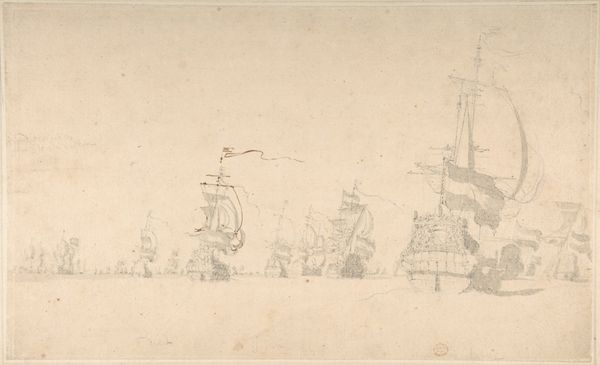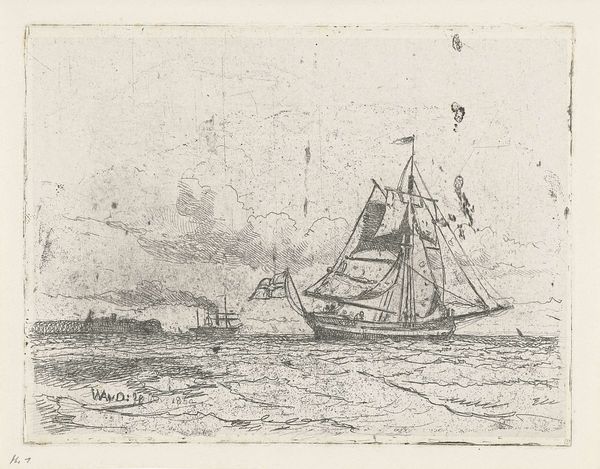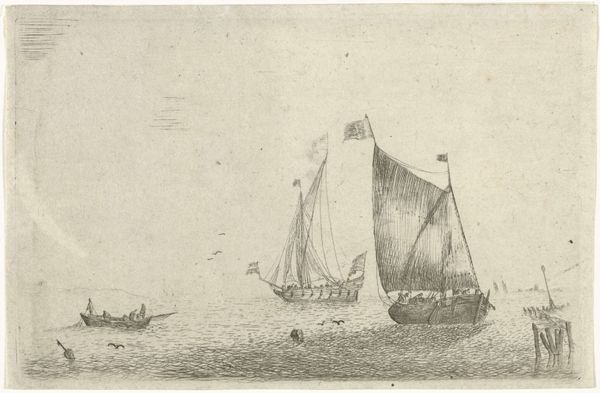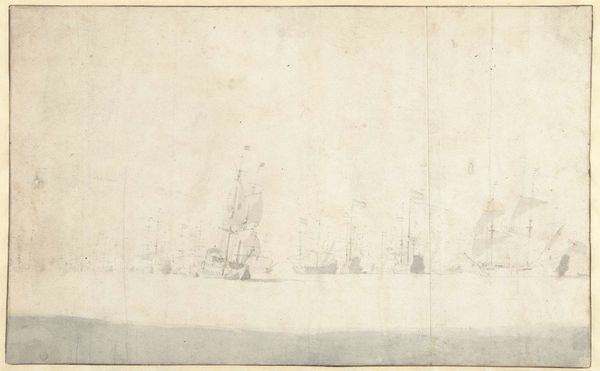
Vertrek van de Engelse koning Karel II tijdens zijn tocht over de Thames naar Sheerness en Chatham op 27 Augustus 1681 Possibly 1681 - 1688
0:00
0:00
drawing, etching, ink, pencil, pen
#
drawing
#
narrative-art
#
baroque
#
etching
#
pencil sketch
#
landscape
#
etching
#
ink
#
pen-ink sketch
#
pencil
#
pen
#
miniature
#
watercolor
Dimensions: height 162 mm, width 367 mm
Copyright: Rijks Museum: Open Domain
Curator: This delicate sketch, attributed to Willem van de Velde the Elder and believed to date from around 1681 to 1688, captures "The Departure of King Charles II on his voyage along the Thames to Sheerness and Chatham on 27 August 1681." It is currently held here at the Rijksmuseum. Editor: My first thought is that it appears like a fleeting moment caught in time. The hazy grey pencil strokes lend a dreamlike, almost melancholic quality to this seascape, despite depicting what was presumably a celebratory departure. Curator: Indeed. Van de Velde was renowned for his marine paintings and drawings, becoming an official marine painter for the English court later in his career. He offers here a fascinating depiction of Charles II's engagement with maritime power. Think about the symbolism embedded in a king choosing to travel by sea, demonstrating command over waterways, the very lifeblood of trade and naval dominance. Editor: And observe how van de Velde renders Charles II here. Standing tall with arm outstretched on his vessel amid a sea of smaller boats. What about the clothing? That towering feathered hat. This is deliberate costuming – emphasizing the monarch’s authority and establishing continuity with images of earlier rulers who were often depicted with the tools or regalia of office. Even in what looks like a casual departure, a statement is being made. Curator: Absolutely. While rendered in a seemingly casual sketch-like fashion, this image reinforced the idea of royal power inextricably linked to the strength of the navy and the control of sea lanes. This was particularly poignant, of course, considering the Anglo-Dutch wars of the period. It can almost be interpreted as soft propaganda! Editor: Yes, everything we see is placed there to create a mood, even on initial viewing it clearly references previous images and expectations of royalty. It provides that vital element of memory. In this case, maritime memory, even. What looks like the throwaway details adds context, adding to the story this tiny sketch is able to tell us. Curator: Reflecting on this work, one realizes how a seemingly simple drawing encapsulates complex power dynamics of the 17th century, highlighting the political stagecraft of maritime travel. Editor: Precisely! And how through an examination of seemingly minor iconic and symbolic attributes like gesture and costuming, we begin to understand the deliberate construction of imagery as historical communication.
Comments
No comments
Be the first to comment and join the conversation on the ultimate creative platform.
